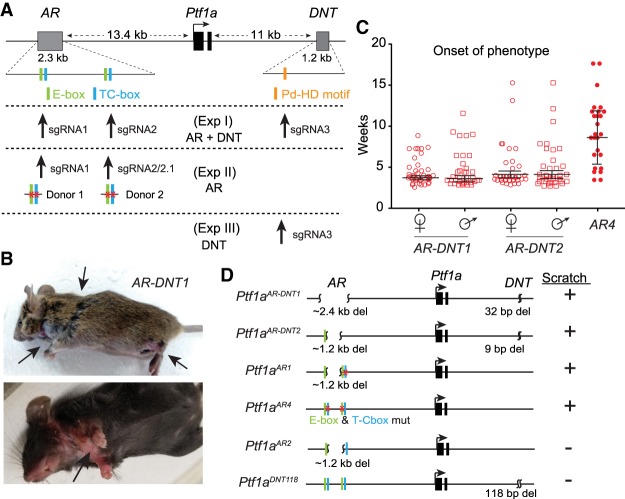Figure 1.
Mutations in the Ptf1a-AR enhancer lead to a spontaneous scratch phenotype. (A) Graphical representation of the Ptf1a locus. The previously identified autoregulatory (AR) enhancer with two PTF1 trimer complex binding sites consisting of an E-box and a TC-box, and the dorsal neural tube (DNT)-specific enhancer with the Pd-HD motif are shown. The sgRNA and donor templates used in the CRISPR targeting strategies in three separate experiments (Exp I–III) are depicted. (B) Representative mutant mice with lesions (arrows) due to excessive spontaneous scratching. (C) Timing for the onset of the scratch phenotype in three of the mutant strains. N > 25 in each group. (D) A subset of the mutant strains with and without the scratch phenotype used for analysis in this study. Both PTF1A-binding sites in the AR enhancer must be disrupted for the mice to exhibit the scratch phenotype (in AR2, a new cryptic PTF1 motif is generated). For details on each mutant strain, see Supplemental Figure S1 and Table S1.

